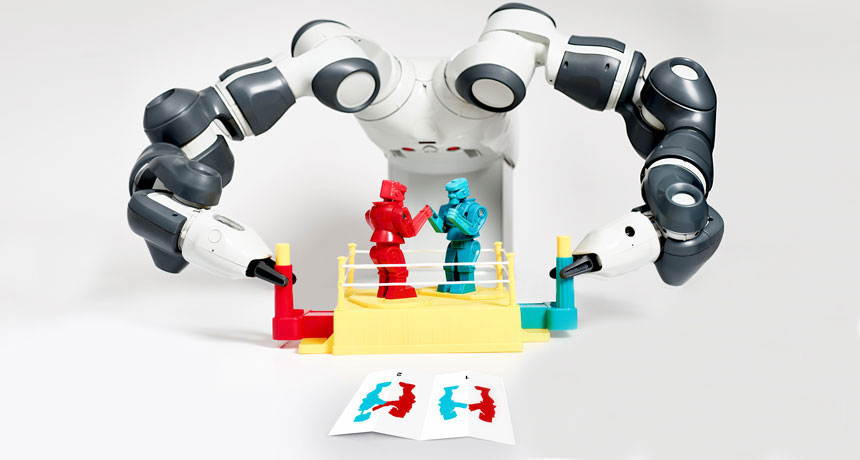These robots can follow how-to diagrams
The AI can figure out what action is needed by analyzing before-and-after images

STEP-BY-STEP A new robot operating system helps bots understand picture-based instructions (like this robot shown with a diagram for how the red toy boxer can defeat the blue) to perform various tasks.
M. Lázaro-Gredilla et al/Science Robotics 2019





